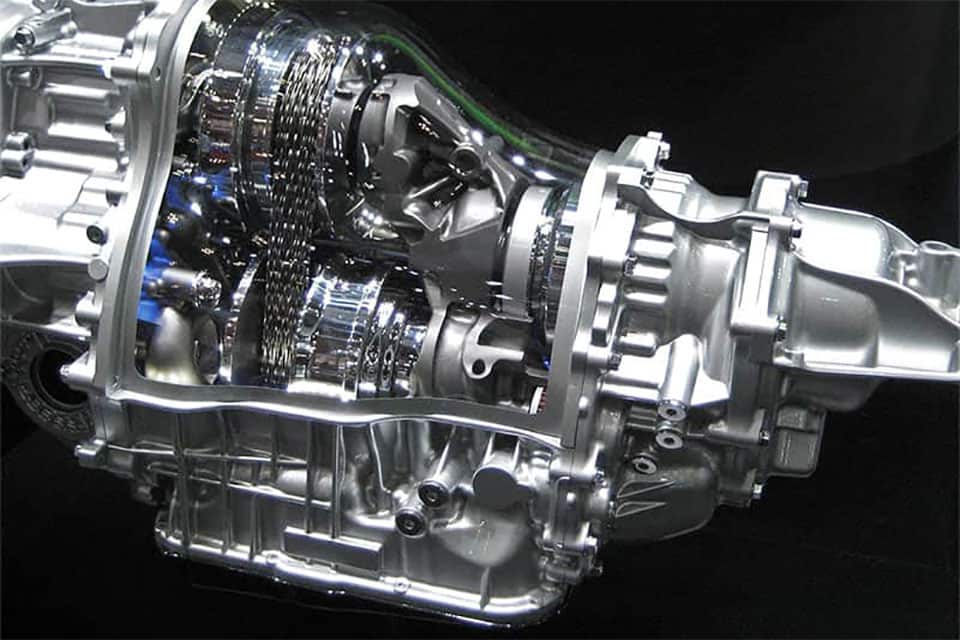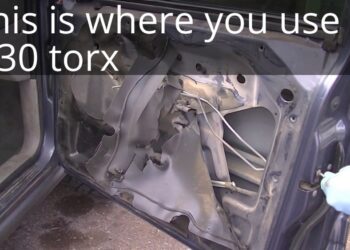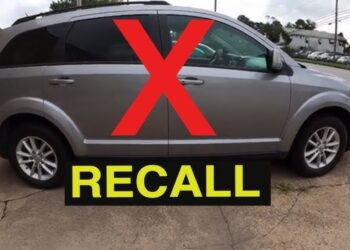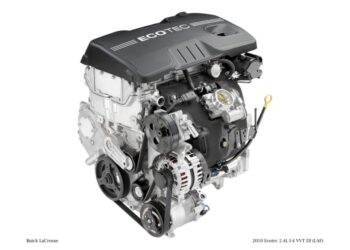Subaru’s CVT (Continuously Variable Transmission) is known for efficiency. But, it has faced some issues.
If you own a Subaru or plan to buy one, understanding these problems is crucial. Subaru’s CVT problems can affect your driving experience and vehicle longevity. Some drivers have reported issues like shuddering, slipping, and unexpected acceleration. Knowing these problems helps in making informed decisions.
It also aids in troubleshooting if you face any CVT-related issues. This blog will delve into the common Subaru CVT problems, their causes, and potential solutions. Stay informed and ensure your Subaru runs smoothly. Let’s explore these issues in more detail to help you maintain your vehicle better.
Introduction To Subaru Cvt
Subaru’s Continuously Variable Transmission (CVT) is known for its smooth performance. But what exactly is CVT? And how does Subaru use it in their vehicles? Let’s take a closer look.
What Is Cvt?
CVT stands for Continuously Variable Transmission. It’s different from traditional automatic transmissions. It doesn’t use fixed gears. Instead, it uses a system of pulleys and belts. This allows for seamless acceleration. Drivers enjoy a smoother ride without gear shifts.
Subaru’s Use Of Cvt
Subaru introduced CVT to enhance fuel efficiency. Their Lineartronic CVT is a popular choice. It’s featured in many Subaru models. The CVT helps in providing better fuel economy. It also delivers a more responsive driving experience. Subaru’s CVT aims to reduce engine strain and improve performance.
Common Cvt Problems
Subaru vehicles are known for their reliability, but their CVT (Continuously Variable Transmission) can have issues. Knowing common CVT problems can help you maintain your car better. Let’s look at two main issues: transmission slipping and delayed engagement.
Transmission Slipping
Transmission slipping is a common problem in Subaru CVTs. When this happens, your car might hesitate during acceleration. You may feel a sudden jolt as the transmission slips. This can make driving unsafe. It’s crucial to address this issue quickly. Regular maintenance can help reduce the chances of slipping.
Delayed Engagement
Delayed engagement is another issue with Subaru CVTs. You might notice a delay after shifting gears. This can be frustrating, especially in traffic. The car seems to pause before moving. This delay can be a sign of a bigger problem. Regular checks and fluid changes can help prevent this issue.
Causes Of Cvt Issues
Subaru owners often experience issues with their Continuously Variable Transmission (CVT). Understanding the causes of these problems can help in preventing and fixing them. Below, we explore two main causes: fluid contamination and overheating.
Fluid Contamination
Fluid contamination is a common cause of CVT problems. The transmission fluid keeps the CVT running smoothly. If the fluid gets contaminated, it can lead to serious issues.
- Dirt and debris can enter the fluid, causing it to lose its effectiveness.
- Metal shavings from wear and tear can mix with the fluid.
- Water can contaminate the fluid, especially if there are leaks.
Regular maintenance is crucial. Changing the transmission fluid at the recommended intervals helps. Using the right type of fluid is equally important.
Overheating
Overheating is another significant cause of CVT issues. The CVT generates a lot of heat. If it gets too hot, it can fail.
- Driving in hot weather can increase the risk of overheating.
- Towing heavy loads puts extra stress on the CVT.
- Stop-and-go traffic can cause the CVT to overheat.
To prevent overheating, ensure your CVT stays cool. Use a transmission cooler if needed. Avoid heavy towing and aggressive driving.
Symptoms Of Failing Cvt
Subaru’s CVT (Continuously Variable Transmission) is known for its smooth operation. But like all vehicle components, it can develop issues. Recognizing the symptoms early can prevent major damage and costly repairs. Below, we discuss the main symptoms that indicate your Subaru’s CVT might be failing.
Warning Lights
One of the first signs of a failing CVT is the warning lights on your dashboard. The most common light to appear is the Check Engine Light. This light can indicate a range of issues, but it often signals transmission problems. Another light to watch for is the Transmission Fluid Warning Light. This light indicates that the transmission fluid is low or overheating. Low fluid can cause the CVT to slip or overheat, leading to further damage. Here is a table summarizing the key warning lights to look out for:
| Warning Light | Possible Issue |
|---|---|
| Check Engine Light | General transmission problems |
| Transmission Fluid Light | Low or overheating fluid |
Unusual Noises
Another clear symptom of a failing CVT is unusual noises. These sounds can vary, but the most common are:
- Whining: This noise often indicates a problem with the transmission fluid.
- Grinding: This could mean the CVT gears are wearing out.
- Rattling: Loose parts within the transmission can cause this sound.
Pay close attention to any new or unusual noises while driving. These sounds can provide early warning signs of CVT issues, helping you address them before they worsen.
Diagnosing Cvt Problems
Diagnosing CVT problems in your Subaru is crucial for maintaining performance. Understanding the signs of trouble can save you from costly repairs. The diagnosis can be done in a few steps. This ensures you pinpoint the exact issue. Let’s explore the two key methods for diagnosing CVT problems.
Obd-ii Scanner
An OBD-II scanner is a powerful tool. It reads trouble codes from your car’s computer. Plug the scanner into the port under the dashboard. Follow the instructions on the device. The scanner will display error codes. These codes indicate specific issues with the CVT. This method is quick and efficient. It helps you identify problems without guesswork.
Professional Inspection
Sometimes, a professional inspection is necessary. Mechanics have the experience to spot issues you might miss. They use specialized tools and perform detailed checks. This includes examining the transmission fluid. They also listen for unusual noises. A thorough inspection can reveal hidden problems. Rely on professionals for a comprehensive diagnosis.

Credit: www.subarucomplaints.com
Preventive Measures
Preventive measures can help avoid common Subaru CVT problems. Regular maintenance and proper driving habits are crucial. These steps can ensure your vehicle runs smoothly and lasts longer.
Regular Maintenance
Regular maintenance is vital for a healthy CVT. Change the transmission fluid as recommended by Subaru. Clean fluid reduces wear and tear. It also keeps the transmission cool. Check for leaks often. Leaks can lead to serious issues. Address them quickly. Regular inspections by a professional can identify problems early. This can save you from costly repairs.
Proper Driving Habits
Proper driving habits can extend the life of your CVT. Avoid rapid acceleration. It strains the transmission. Smooth, gradual acceleration is better. Do not overload your vehicle. Excess weight puts extra pressure on the CVT. When stopping, come to a complete halt before shifting from drive to reverse. This prevents undue stress on the transmission. Avoid towing heavy loads. It can overheat the CVT. Following these habits can prevent common CVT problems.
Repair And Replacement Options
Experiencing issues with your Subaru CVT can be frustrating. Understanding the available repair and replacement options is crucial. This section will help you explore the best choices for addressing these problems.
Cost Considerations
Repairing or replacing a CVT can be costly. The price varies depending on the extent of the damage. Minor repairs might cost a few hundred dollars. On the other hand, a complete replacement can exceed $4,000.
Here’s a brief comparison:
| Service | Estimated Cost |
|---|---|
| Minor Repairs | $500 – $1,000 |
| Major Repairs | $1,000 – $2,500 |
| Replacement | $3,000 – $4,500 |
Warranty Coverage
Checking your warranty coverage is essential. Subaru offers a powertrain warranty that might cover CVT issues. This warranty typically lasts for 5 years or 60,000 miles.
Consider these points:
- Check if your vehicle is within the warranty period.
- Review the specific terms related to CVT coverage.
- Contact your dealer for detailed information.
Understanding these aspects can save you from unexpected expenses.

Credit: olive.com
Choosing The Right Mechanic
Choosing the right mechanic for Subaru CVT problems is crucial. A skilled mechanic can make a significant difference. This section will guide you in selecting the best one. Make sure you consider the following factors.
Certified Technicians
Look for mechanics with certifications. ASE certification is important. It shows they have the required skills. Subaru-specific training is even better. It ensures they know the brand’s unique issues. This expertise can lead to better diagnosis and repair.
Customer Reviews
Read customer reviews online. They offer insights from other Subaru owners. Pay attention to feedback about CVT repairs. Positive reviews indicate reliable service. Negative reviews can be red flags. Consider both the number and quality of reviews.

Credit: www.sportsubaru.com
Frequently Asked Questions
What Are Common Subaru Cvt Problems?
Common problems include transmission shudder, delayed engagement, and overheating. These issues can affect performance and reliability.
How Do I Know If My Subaru Cvt Is Failing?
Signs of failure include strange noises, slipping gears, and reduced acceleration. Regular check-ups can help detect issues early.
Is Subaru Cvt Reliable?
Subaru CVTs are generally reliable but have known issues. Regular maintenance can improve longevity and performance.
How Much Does It Cost To Fix Subaru Cvt Problems?
Repair costs vary. Minor fixes may cost a few hundred dollars. Major repairs can exceed a thousand dollars.
Can I Prevent Subaru Cvt Problems?
Yes, regular maintenance and using the right transmission fluid can help prevent issues and extend the life of your CVT.
Conclusion
Dealing with Subaru CVT problems can be frustrating. Regular maintenance is key. Always stay alert to unusual noises or jerking. Seek professional help when needed. Understanding these issues helps maintain your vehicle better. Keep your Subaru running smoothly by addressing problems early.
Don’t ignore warning signs. Your Subaru deserves proper care and attention. Regular check-ups can prevent bigger issues. Stay informed and proactive for a better driving experience.

















